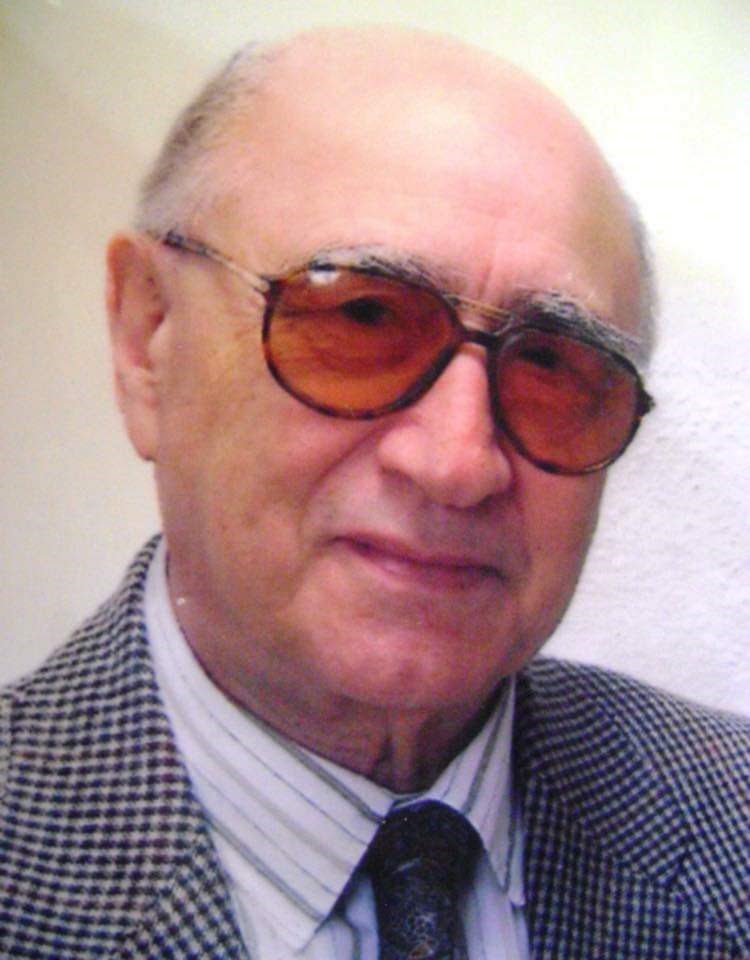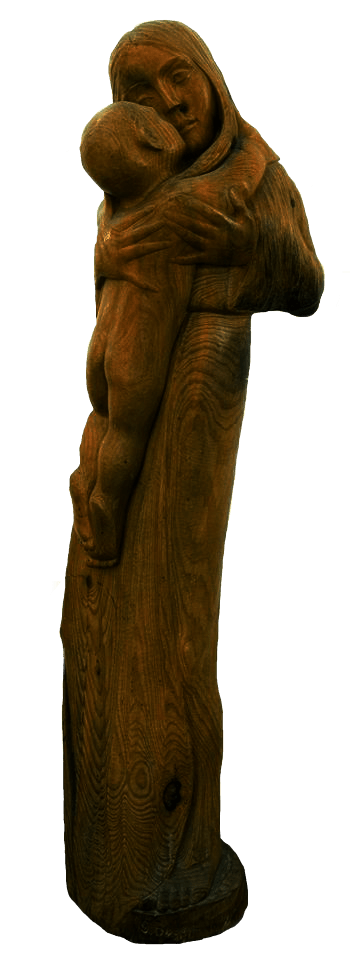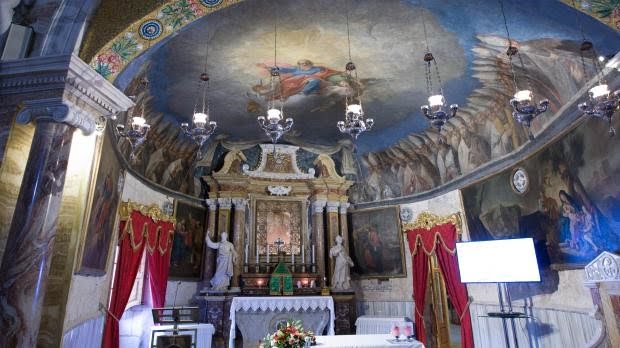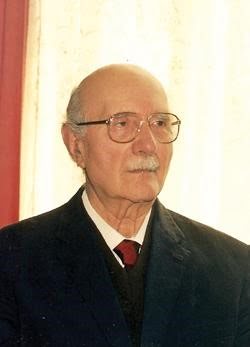The Maltese Restorer, Sculptor and Painter - By Chev. Vincenzo Maria Pellegrini
Page 1 | Page 2 | Page 3 | Page 4 | Page 5 |


Fourteen works of art in wood, amongst others modelled in clay, completed the 1972 exhibition.
In this ensemble there was an outstanding ´Saint John the Baptist´ modelled in clay. It is perfectly executed in its anatomy whilst the figure is well modelled and the facial shriveling displayed the fasting he went through the weeks before.
Sculptures in wood distinguish themselves because of their simplicity, refinement, drenched in light and shades – all executed to the minutest detail. It is evident that Samuel´s models have derived from the members of his same family and they adapted to merge better to the subject of his creation. Behind the clothing there stands the human figure which for Samuel Bugeja was the highest artistic expression.
The renowned Art Critic E.V. Borg condensed the art of artist Samuel Bugeja as ´traveling through the poetic regions of the heart´.
Even during his later period in life, Samuel Bugeja could not detach himself from his artistic creations. In fact, he felt free enough of the pressures of commissions and teaching to dedicate better his energies to works that were most dear to his heart.
Works that were executed during this later period of his artistic career are:
1. Restoration of the vault of the Parish Church at Nadur in Gozo. The painting was the work of Lazzaro Pisani;
2. The restoration of the titular of the Virgin Mary at the Carmelite Church in Valletta;
3. A full size titular statue of the Madonna for the Lourdes parish Church in Paola;
4. Six panels in high relief at the Sanctuary of Mellieha representing:
a. Saint Paul preaching to the Maltese during his stay in Malta;
b. Saint Luke painting the Madonna during his stay in Malta during the same period;
c. The Bishops that stopped over on their way back from the Council of Nicea whilst consecrating the Sanctuary;
d. The act of sacrilege by Saracens on the Holy effigy of the Madonna with Child. In fact, the effigy shows signs of deep incisions by a pointed instrument. According to the legend, the icon was not completely destroyed by the Saracens because they were scared away during the act by a strange noise;
e. The crowning of the Madonna and the Child by Bishop Mons. Pietro Pace;
f. Miraculous events.
However, by far the most important and prestigious work that Samuel Bugeja undertook was the discovery and eventual restoration of the oldest image of the Madonna in Malta – well conserved at the Mellieha Sanctuary. Legend has it that the first icons were attributed to Saint Luke during his stay in Malta.
The event occurred when Samuel Bugeja was commissioned to restore the murals of the natural grotto where the Madonna icon stood. He examined the plaster (devoid of any colour) where the icon had been originally painted. Samuel Bugeja knew of a copy that artist Giuseppe Cali was commissioned to make thereof at the end of the 19th century for records purposes because of its advanced deterioration. However, Samuel Bugeja had other ideas. He had the intuition that below that plaster there had to be another painting. Following due consultations, the Ecclesiastical Authorities gathered sufficient courage to allow Samuel Bugeja to remove the plaster layers. Samuel Bugeja´s belief that below those plaster layers lied the original painting proved right and he was commissioned to undertake the restoration of the discovered Madonna and Child icon.

When the work was complete, the icon revealed its original splendor in hues that tended towards the maroons, lively colours within the context of sobriety, painted directly on rock – an issue that gave Samuel Bugeja difficult challenges for the restoration of the uncovered image. It was originally painted using resistant colours that adhered well to the rock sub-strate.
The Cali reproduction (which is still in existence) of the image that was degrading does not resemble in any way the deeper image discovered by Samuel Bugeja. It proves that the discovered image was many centuries older than the one copied by Cali. It is to be noted that what Samuel Bugeja undertook was not just restoration but archeological discovery of inestimable value. This feat is solely attributable to the professional acumen of Samuel Bugeja.
Samuel Bugeja has thus continued the rich artistic tradition in Malta on the strength of his sculpture and painting besides his competent experience in local restoration on scientific basis, resulting in many art masterpieces recovered to their original splendor and are the pride of all those that are capable of appreciating the artistic heritage which, thanks to this outstanding artist, will be bequeathed to future generations.
Article By Chev. Vincenzo Maria Pellegrini

Vincenzo Maria Pellegrini, born in 1911, was a notary by profession. He was a poet, author, playwright, translator of literary works, opera and cantata librettist, painter.
A patron of the Arts, he encouraged young and established artists, poets, writers, musicians. He was also known beyond our shores. He founded the Institute for Cultural Exchanges, where he organised art exhibitions, music recitals and cultural talks. He was also a member of the Manoel Theatre management committee (1960-1971) when this jewel of a theatre was restored and brought back to life around 50 years ago.
He died on October 1, 1997, but his memory still lives in the hearts of his sons and daughter, his grandchildren and all those who knew him.